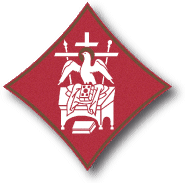Finnish Orthodox Church
| Orthodox Church of Finland | |
|---|---|

Coat of arms
|
|
| Founder | Patriarch Tikhon of Russia in 1921 (not "founder", but granted autonomy) |
| Independence | 1921 |
| Recognition | recognised in 1923 by the Ecumenical Patriarchate of Constantinople and in 1957 by the Russian Orthodox Church. |
| Primate | Archbishop of Karelia and all Finland Leo Makkonen |
| Headquarters | Kuopio, Finland |
| Territory | Finland |
| Possessions | Estonia |
| Language | Finnish, Swedish, Russian, Greek |
| Members | 58,000 |
| Bishops | 5 |
| Priests | c. 140 |
| Parishes | 25 |
| Monasteries | 2 |
| Website | Finnish Orthodox Church |
The Finnish Orthodox Church (Finnish: Suomen ortodoksinen kirkko; Swedish: Finska Ortodoxa Kyrkan), or Orthodox Church of Finland, is an autonomous Eastern Orthodox archdiocese of the Ecumenical Patriarchate of Constantinople. The Church has a legal position as a national church in the country, along with the Evangelical Lutheran Church of Finland.
With its roots in the medieval Novgorodian missionary work in Karelia, the Finnish Orthodox Church was a part of the Russian Orthodox Church until 1923. Today the church has three dioceses and 58,000 members that account for 1.1 percent of the native population of Finland. The parish of Helsinki has the most adherents.
Along with the Evangelical Lutheran Church of Finland, the Orthodox Church of Finland has a special position in Finnish law. The church is considered to be a Finnish entity of public nature. The external form of the church is regulated by an Act of Parliament, while the spiritual and doctrinal matters of the church are legislated by the central synod of the church. The church has the right to tax its members and corporations owned by its members. Previously under the Russian Orthodox Church, it has been an autonomous Orthodox archdiocese of the Patriarchate of Constantinople since 1923.
The Finnish Orthodox Church is divided into three dioceses (hiippakunta), each with a subdivision of parishes (seurakunta). There are 25 parishes with 140 priests and more than 58,000 members in total. The number of church members has been steadily growing for several years. A convent and a monastery also operate within the church.
The central legislative organ of the church is the central synod which is formed of
The priests and cantors elect their representatives on diocesan basis, using plurality election method. The laymen representatives are elected indirectly. The nominations for representatives are made by the parish councils which also elect the electors who then elect the lay representatives to the central synod. The central synod elects the bishops and is responsible for the economy and the general doctrine of the church.
...
Wikipedia
